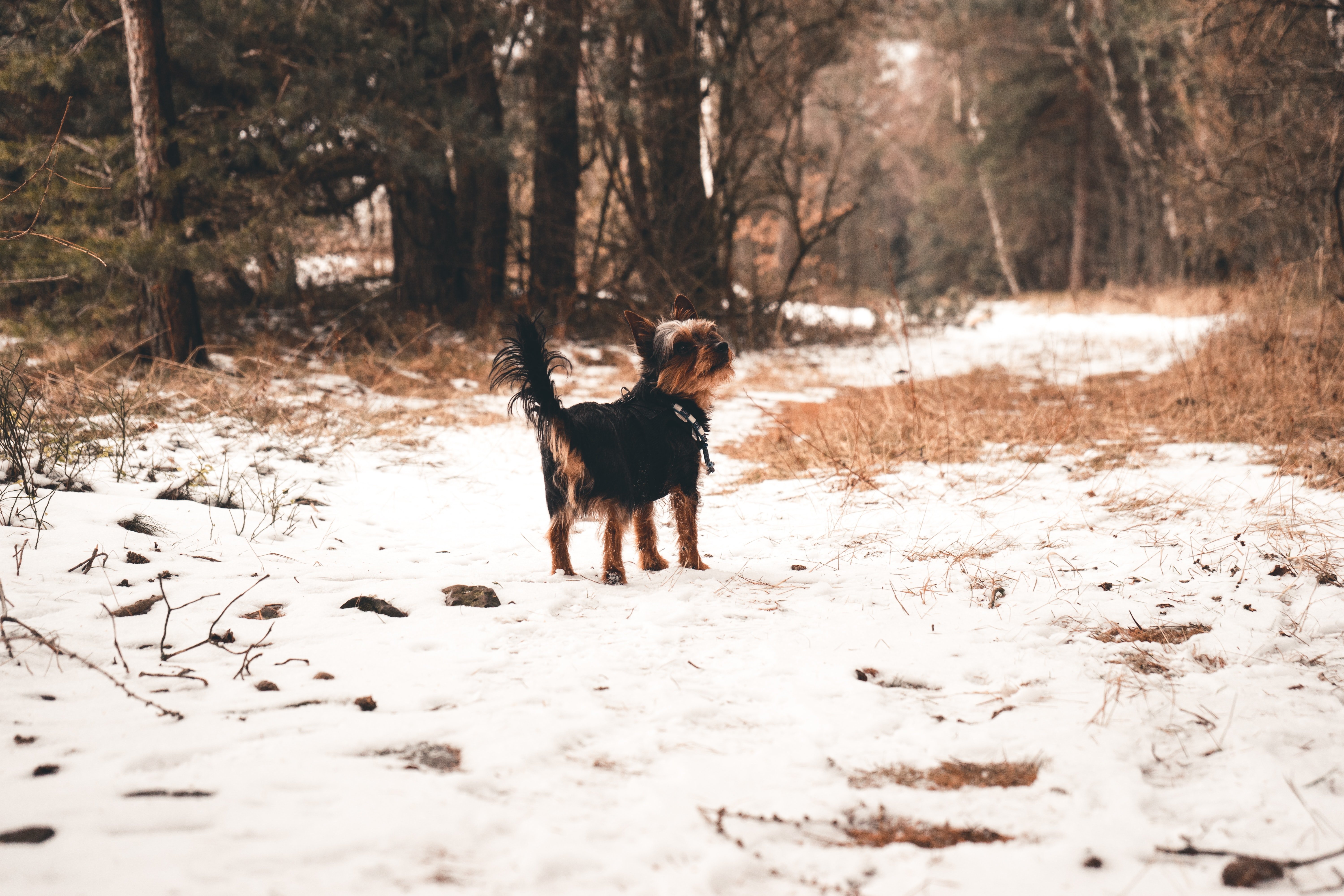Keeping Your Pet Safe in Cold Weather
Cold weather has arrived, and snow is sure to follow soon! While that may mean plenty of fun-filled days in the snow for you and your furry friend, check out these tips to keep them safe and sound during the colder months.
- Bundle Up
While some pet parents may think that their four-legged family members have a high tolerance to the cold because of their fur, this isn’t always the case. Like humans, a pet’s tolerance to the cold can vary so it’s important that they’re dressed appropriately for the temperature outside. No matter the size or breed of your furry friend, there are a variety of coats available that can help keep them warm (and stylish!) during the colder months.
- Easy to Identify
As snow begins to fall and ice starts to form, our pet’s ability to track scents and find their way home may not be as good as it was during the warmer months. It’s important to make sure your pet’s tag is not only up to date with both your phone number and emergency contact, but that it is in good condition as its legibility can decrease over time. Microchipping your pet is also a great way to easily identify them if they get lost.
- Protect Their Paws
Many salts used to melt ice in the winter can irritate your pet’s paws. Pet booties can help protect your furry friend’s paws from outdoor irritants and keep them warm. If you take your pet for a walk without any booties, make sure you wipe down their paws and legs when you return home to remove any potential irritants. Depending on where your adventure took you, it’s also a good idea to wipe down their belly just in case!
- Modify Your Walking Routine
During the warmer months, you and your pet may be used to taking walks along the lakeshore or other bodies of water. As the weather gets colder, steer clear of these bodies of water as they start to freeze. A lake or pond may appear to be completely frozen and solid, but it’s not worth the risk of your pet falling through!
Also, consider shortening the length of your pet’s walks when it’s very cold out as they are still susceptible to dangers such as frostbite. You’ll also want to keep a close eye on your pet while walking if it is very snowy out, as patches of ice can be hidden and can result in an injury if your pet slips. Take your time, don’t rush and enjoy careful, leisurely walks during these times. You should also keep your pet away from any puddles that you encounter while walking in the winter, as these could contain antifreeze or other winter maintenance chemicals that can be seriously harmful to pets.
- Plan Ahead
Canadian winters can be absolutely beautiful, but they can also bring brutal storms! A light dusting of snow can quickly change to a fierce blizzard, and it’s important to be prepared should you and your furry friend be stuck at home for longer than anticipated. Make sure you have enough food and water on hand for your family members (four-legged ones included!) as well as any necessary medications in case you’re unable to leave the house for several days.
- Car Safety
Many pet parents are aware of the dangers of leaving your pet in a hot car, but it can also be dangerous to leave them in a car that is too cold. If you realize you need to pick something up from the store while your pet is tagging along on a drive on a very cold day, the safest option is to drop them off at home first.
If you have an outdoor cat, the safest thing to do is keep them indoors when it’s cold out. When it’s cold outside, some cats will seek shelter and warmth in the wheel wells of cars. Before you get in your car and turn it on make some noise and tap on the hood and tires to alert any cat that may be hiding.



